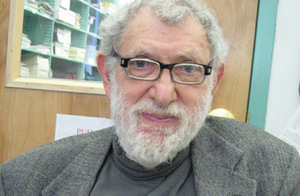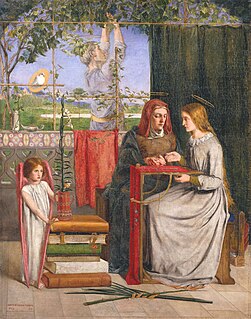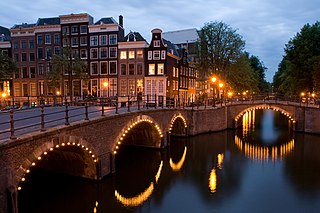January 14 is the 14th day of the year in the Gregorian calendar. There are 351 days remaining until the end of the year.
October 20 is the 293rd day of the year in the Gregorian calendar. There are 72 days remaining until the end of the year.
October 14 is the 287th day of the year in the Gregorian calendar. There are 78 days remaining until the end of the year.
October 18 is the 291st day of the year in the Gregorian calendar. There are 74 days remaining until the end of the year.

The 17th century was the century that lasted from January 1, 1601, to December 31, 1700, in the Gregorian calendar. It falls into the Early Modern period of Europe and in that continent was characterized by the Baroque cultural movement, the latter part of the Spanish Golden Age, the Dutch Golden Age, the French Grand Siècle dominated by Louis XIV, the Scientific Revolution, and according to some historians, the General Crisis. The greatest military conflicts were the Thirty Years' War, the Great Turkish War, and the Dutch-Portuguese War. It was during this period also that European colonization of the Americas began in earnest, including the exploitation of the silver deposits, which resulted in bouts of inflation as wealth was drawn into Europe.

1648 (MDCXLVIII) was a leap year starting on Wednesday of the Gregorian calendar and a leap year starting on Saturday of the Julian calendar, the 1648th year of the Common Era (CE) and Anno Domini (AD) designations, the 648th year of the 2nd millennium, the 48th year of the 17th century, and the 9th year of the 1640s decade. As of the start of 1648, the Gregorian calendar was 10 days ahead of the Julian calendar, which remained in localized use until 1923.

1659 (MDCLIX) was a common year starting on Wednesday of the Gregorian calendar and a common year starting on Saturday of the Julian calendar, the 1659th year of the Common Era (CE) and Anno Domini (AD) designations, the 659th year of the 2nd millennium, the 59th year of the 17th century, and the 10th and last year of the 1650s decade. As of the start of 1659, the Gregorian calendar was 10 days ahead of the Julian calendar, which remained in localized use until 1923.

1674 (MDCLXXIV) was a common year starting on Monday of the Gregorian calendar and a common year starting on Thursday of the Julian calendar, the 1674th year of the Common Era (CE) and Anno Domini (AD) designations, the 674th year of the 2nd millennium, the 74th year of the 17th century, and the 5th year of the 1670s decade. As of the start of 1674, the Gregorian calendar was 10 days ahead of the Julian calendar, which remained in localized use until 1923.

Gorinchem, also called Gorkum, is a city and municipality in the western Netherlands, in the province of South Holland. The municipality covers an area of 21.93 km2 (8.47 sq mi) of which 3.01 km2 (1.16 sq mi) is water. It had a population of 36,233 in 2017.
Dutch-language literature comprises all writings of literary merit written through the ages in the Dutch language, a language which currently has around 23 million native speakers. Dutch-language literature is the produce of Netherlands, Belgium, Suriname, the Netherlands Antilles and of formerly Dutch-speaking regions, such as French Flanders, South Africa, and Indonesia. The Dutch East Indies, as Indonesia was called under Dutch colonization, spawned a separate subsection in Dutch-language literature. Conversely, Dutch-language literature sometimes was and is produced by people originally from abroad who came to live in Dutch-speaking regions, such as Anne Frank and Kader Abdolah. In its earliest stages, Dutch-language literature is defined as those pieces of literary merit written in one of the Dutch dialects of the Low Countries. Before the 17th century, there was no unified standard language; the dialects that are considered Dutch evolved from Old Frankish. A separate Afrikaans literature started to emerge during the 19th century, and it shares the same literary roots as contemporary Dutch, as Afrikaans evolved from 17th-century Dutch. The term Dutch literature may either indicate in a narrow sense literature from the Netherlands, or alteratively Dutch-language literature.

Ruigoord is a village in the Houtrakpolder in the Dutch province of North Holland, situated within the municipality of Amsterdam. Until the 1880s, it was an island in the IJ bay, which turned into a polder. The village is nowadays partially closed in by the Port of Amsterdam, and lies about 8 km east of Haarlem.

John Hollander was an American poet and literary critic. At the time of his death, he was Sterling Professor Emeritus of English at Yale University, having previously taught at Connecticut College, Hunter College, and the Graduate Center, CUNY.
Events from the year 1674 in England.
Events from the year 1617 in Ireland.

Anna is a Latin form of the Greek name Ἅννα and the Hebrew name Hannah, meaning "favor" or "grace" or "beautiful". Anna is in wide use in countries across the world as are its variants Anne, originally a French version of the name, though in use in English speaking countries for hundreds of years, and Ann, which was originally the English spelling. Saint Anne is traditionally the name of the mother of the Virgin Mary, which accounts for its wide use and popularity among Christians. The name has also been used for numerous saints and queens.
A Poet in New York is a British drama television film that was first broadcast, in a 60-minute version, by BBC One Wales on 30 April 2014. A longer 75-minute version was later broadcast by BBC Two on 18 May 2014. The film, written by Andrew Davies and directed by Aisling Walsh, explores how Welsh poet Dylan Thomas died in New York at the age of 39. The film was made to mark the centenary of Thomas' birth on 27 October 1914.










